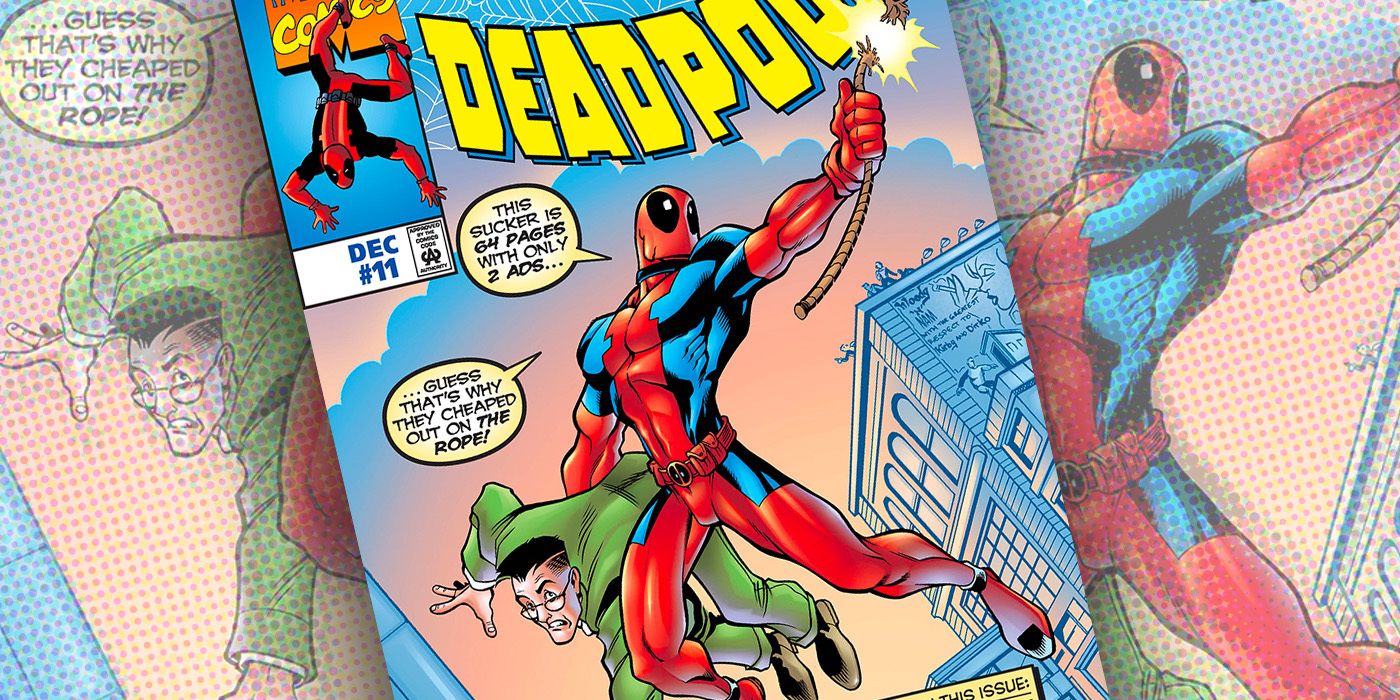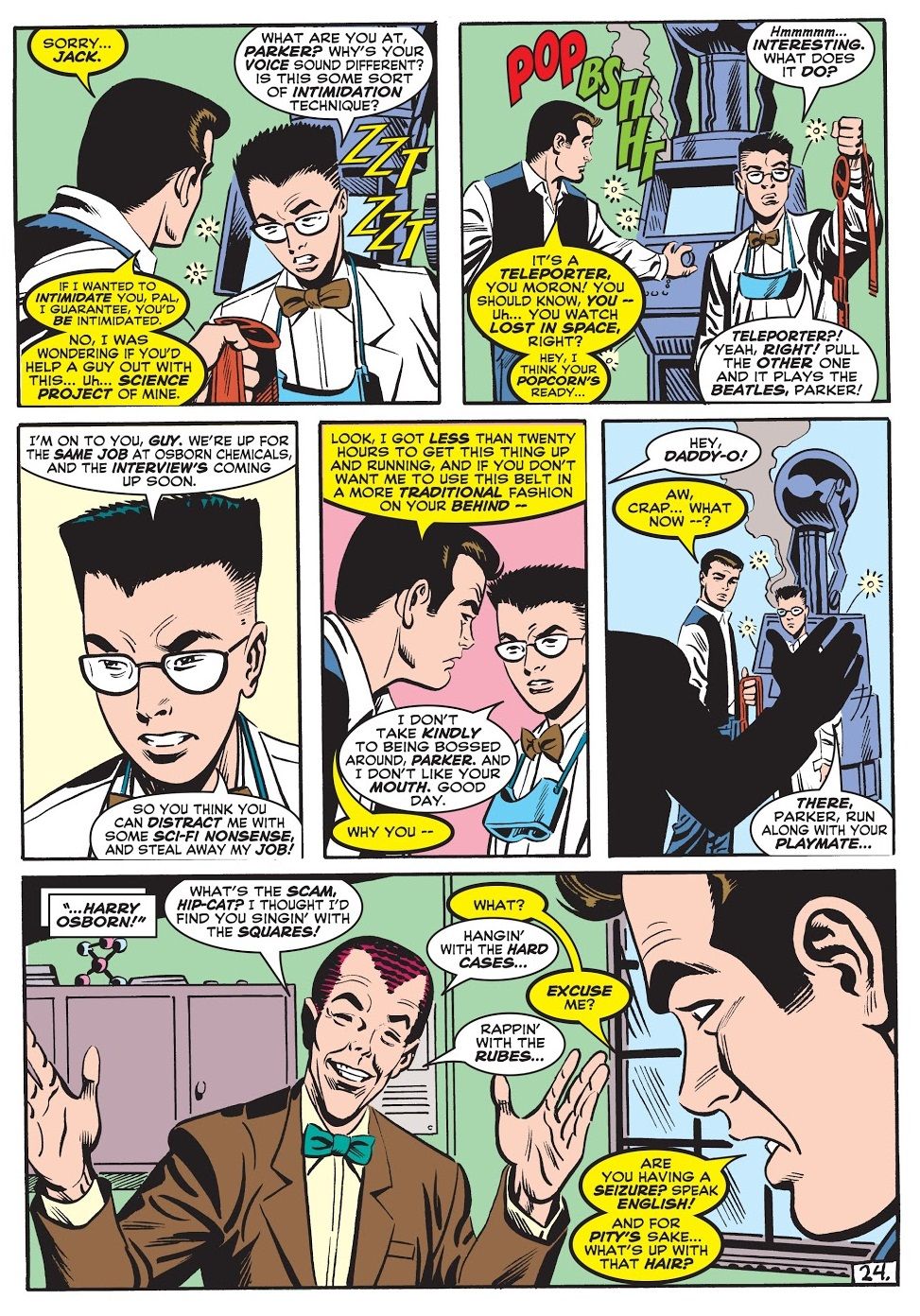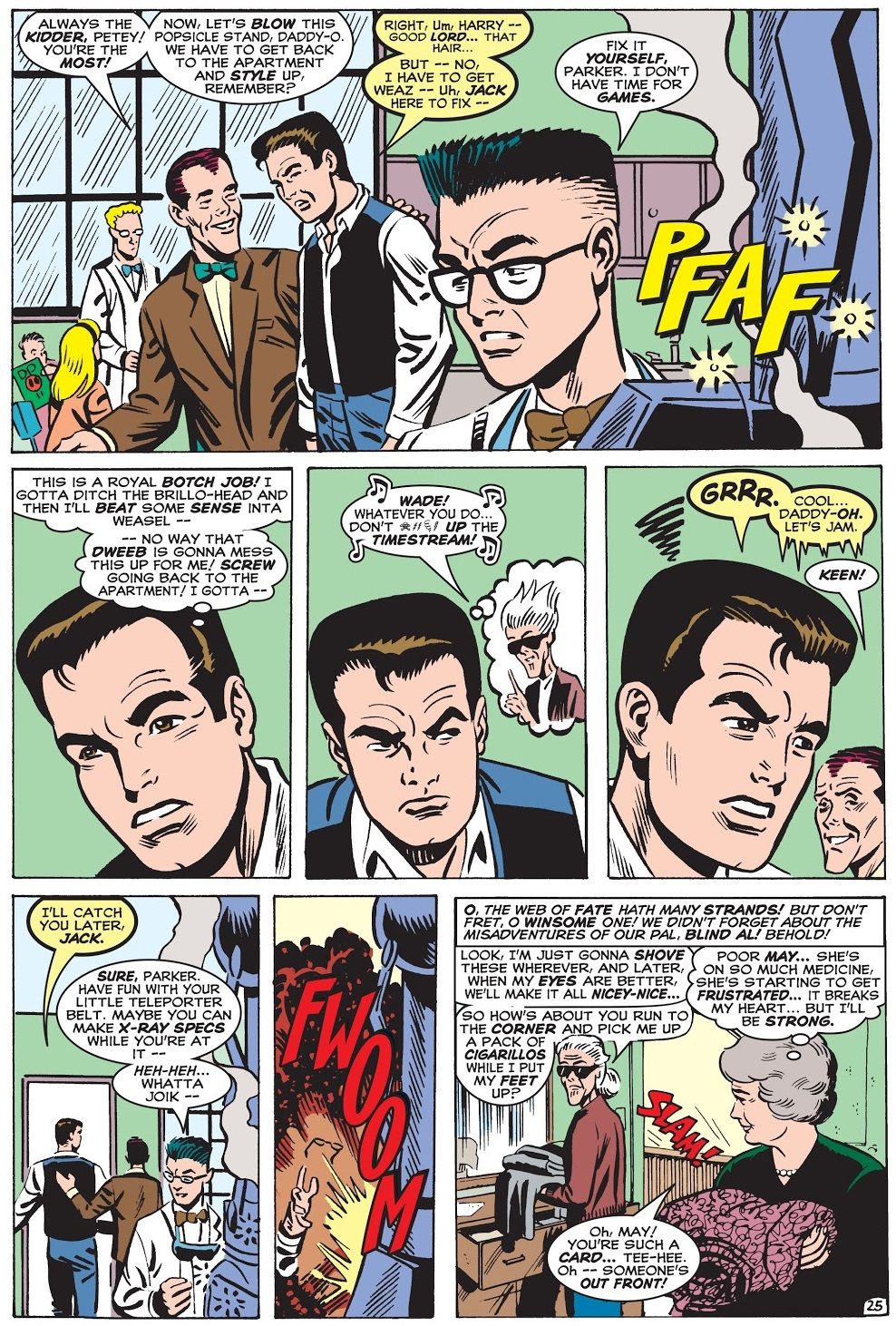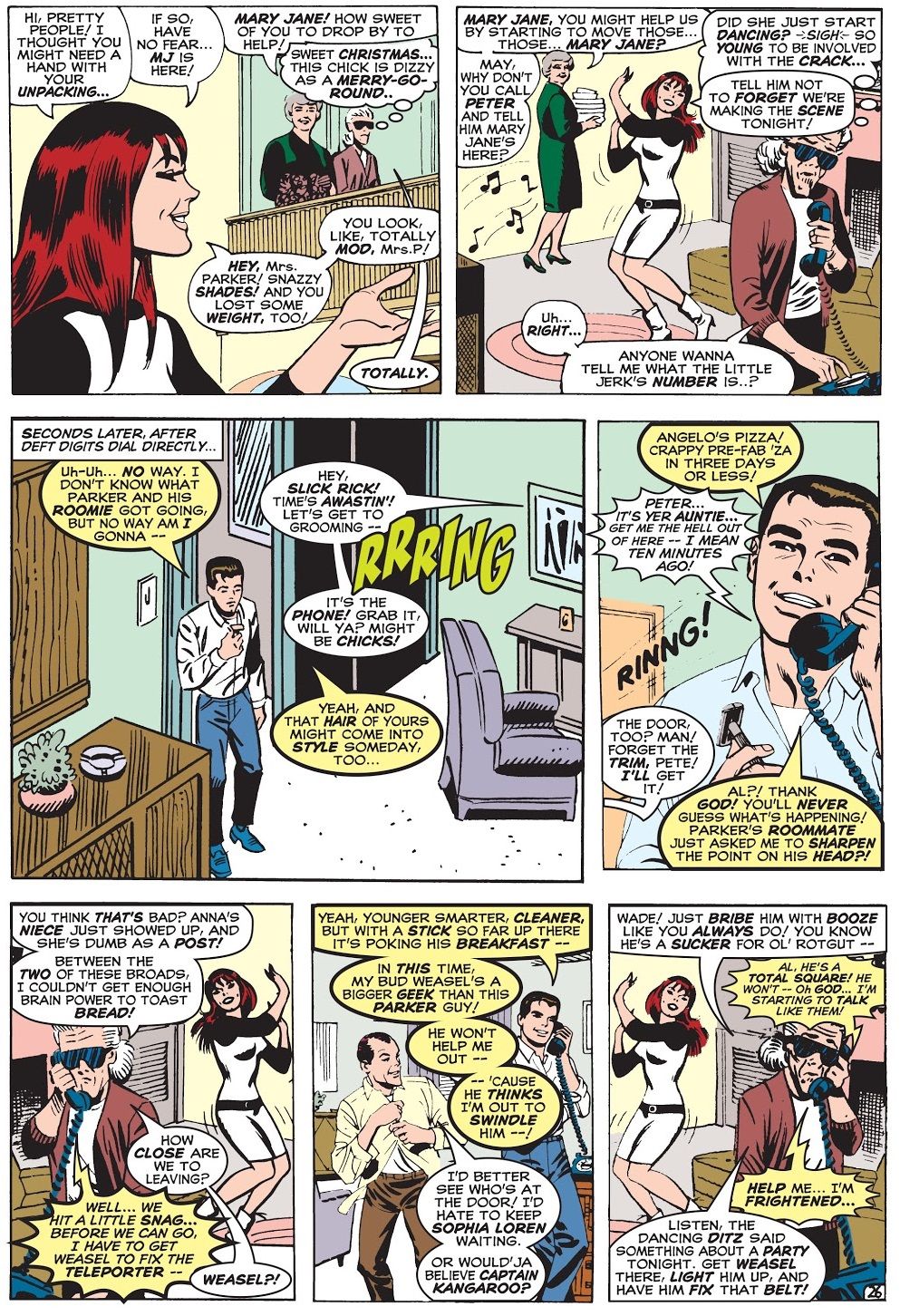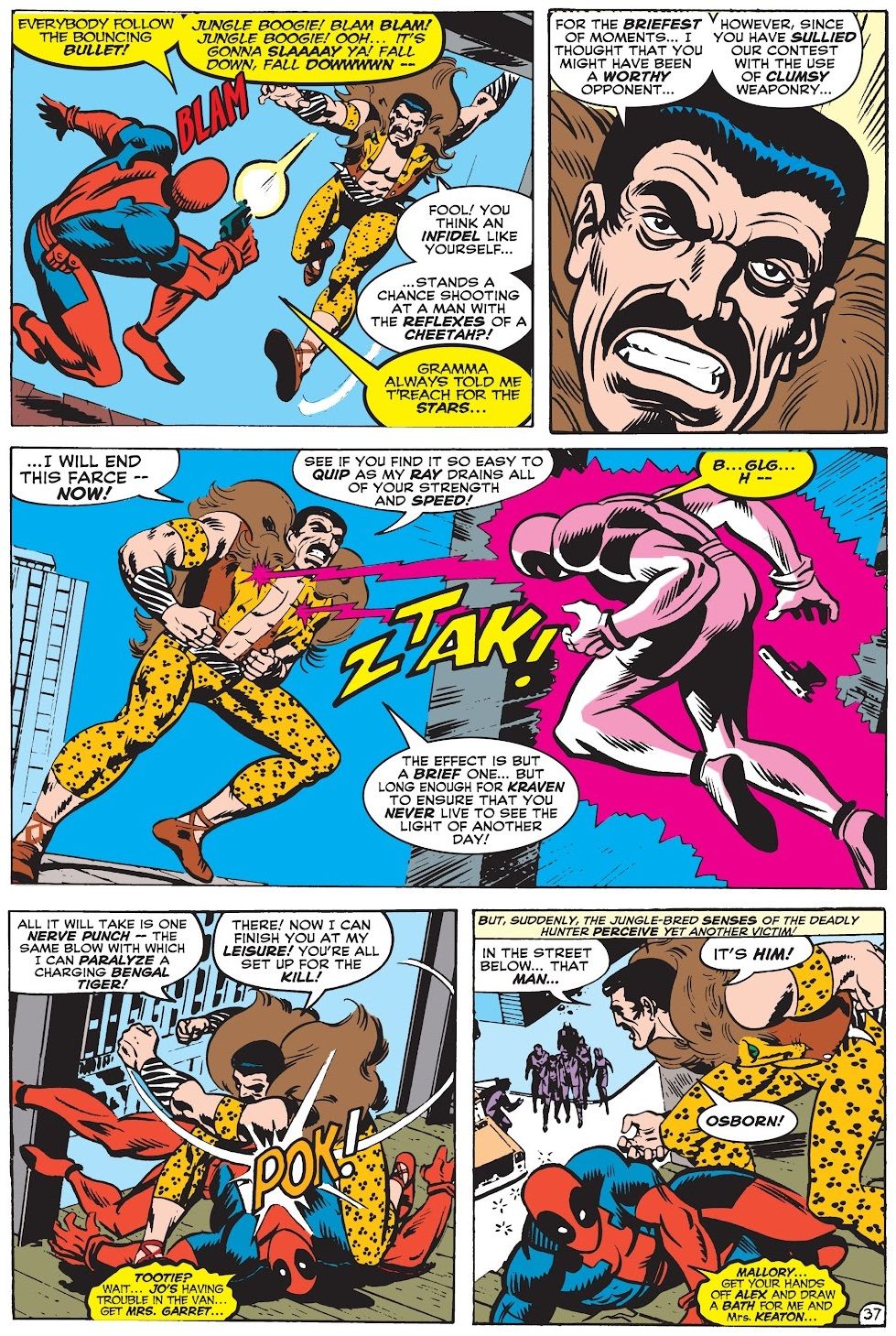Today, we head back 25 years ago, to see Deadpool pull a Forrest Gump by time traveling into a 1967 issue of Amazing Spider-Man!.
This is "Look Back," where every four weeks of a month, I will spotlight a single issue of a comic book that came out in the past and talk about that issue (often in terms of a larger scale, like the series overall, etc.). Each spotlight will be a look at a comic book from a different year that came out the same month X amount of years ago. The first spotlight of the month looks at a book that came out this month ten years ago. The second spotlight looks at a book that came out this month 25 years ago. The third spotlight looks at a book that came out this month 50 years ago. The fourth spotlight looks at a book that came out this month 75 years ago. The occasional fifth week (we look at weeks broadly, so if a month has either five Sundays or five Saturdays, it counts as having a fifth week) looks at books from 20/30/40/60/70/80 years ago.
This time around, we look at November 1997's Deadpool #11 by Joe Kelly, Pete Woods, Nathan Massengill, Joe Sinnott, Al Milgrom, and, in a roundabout way, John Romita Sr., as Deadpool pulls a Forrest Gump into an issue of Amazing Spider-Man from 1967.
WHAT DOES IT MEAN TO "PULL A FORREST GUMP"?
It just occurred to me that while this comic book came out just three years after Forrest Gump had been released (and become a massive box office success on its way to winning the Academy Award for Best Picture), it's now 25 years later, and thus the Forrest Gump aspect of this comic book might seem to be a bit out of place as a pop culture reference, especially since the film was not a time traveling film, while this issue IS a time traveling issue.
Forrest Gump, directed by Robert Zemeckis, followed Tom Hanks' Gump, as his life touched on various major moments in the mid-20th Century. Using highly advanced computer graphic effects (that still look good today, but looked REALLY good in 1994), Gump was edited into sharing moments with major historical figures, like receiving a medal from President Lyndon B. Johnson...
Thus, the reference for this issue is that Joe Kelly and Pete Woods basically "edit" Deadpool into the pages of Amazing Spider-Man #47 (by Stan Lee and John Romita).
HOW DID DEADPOOL TRAVEL INTO AN ISSUE OF AMAZING SPIDER-MAN?
In this issue, Deadpool and his captive/companion, Blind Al, get sent back in time. They land, oddly enough, in the pages of an old Stan Lee and John Romita issue of Amazing Spider-Man. Deadpool uses an image inducer to take Peter Parker's place while Blind Al disguises herself as Aunt May. They then, in effect, do Mystery Science Theater 3000- style jokes about the plot of this 1967 issue of Amazing Spider-Man, as Deadpool needs the help of the teen version of his tech guy, Weasel, to help him get back to the future...
The jokes work so well because they're all clearly in good fun...
This is obviously a very well-regarded era for Amazing Spider-Man, so no one is seriously mocking these issues, but instead just pokng fun at some of the aspects of ANY pop culture story of the era, like the slang or the outfits...
Blind Al's bit about Mary Jane being on drugs is probably my favorite of the whole issue.
The fascinating thing is seeing Woods adjust his art style to fit the Romita style of 1967, but not just in terms of the art itself, but also of the heavy grid format of the older comic book, which is very different than the much more wide open style that most comic book artists were using at the time, Woods included. In fact, as we contrast between the past and the present (where the team formerly known as the Great Lakes Avengers, now mimicking the Thunderbolts instead by calling themselves the Lighting Rods, not knowing that the Thunderbolts were, of course, the Masters of Evil, were trying to find a way to get Deadpool and Blind Al back to the present), we can see how different the styles are and it is really cool to watch.
There's even a fight scene between Deadpool and Kraven the Hunter, with Woods having to work with the established Romita fight sequence between Kraven and Spidey...
This was really such a creative comic book, and Kelly and Woods did such an amazing job at editing everything together to be both a lot of fun, but also make coherent sense. It was a true triumph. One of the best #11 issues of all-time, I would say (not saying a whole lot there, of course, but hey, it's still something!).
I'm surprised we haven't seen another comic book try this sort of thing since.
If you folks have any suggestions for December (or any other later months) 2012, 1997, 1972 and 1947 comic books for me to spotlight, drop me a line at brianc@cbr.com! Here is the guide, though, for the cover dates of books so that you can make suggestions for books that actually came out in the correct month. Generally speaking, the traditional amount of time between the cover date and the release date of a comic book throughout most of comic history has been two months (it was three months at times, but not during the times we're discussing here). So the comic books will have a cover date that is two months ahead of the actual release date (so October for a book that came out in August). Obviously, it is easier to tell when a book from 10 years ago was released, since there was internet coverage of books back then.

